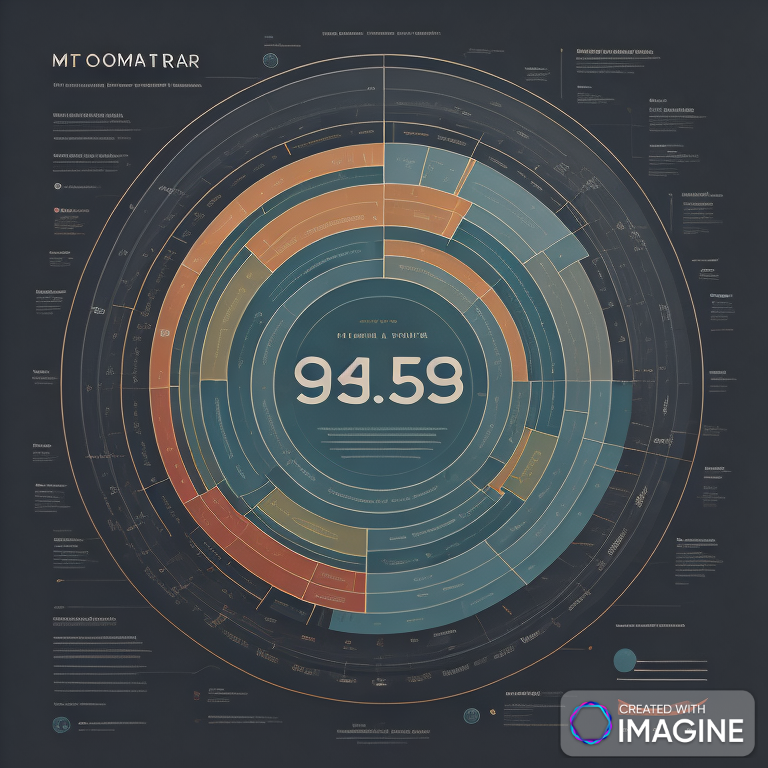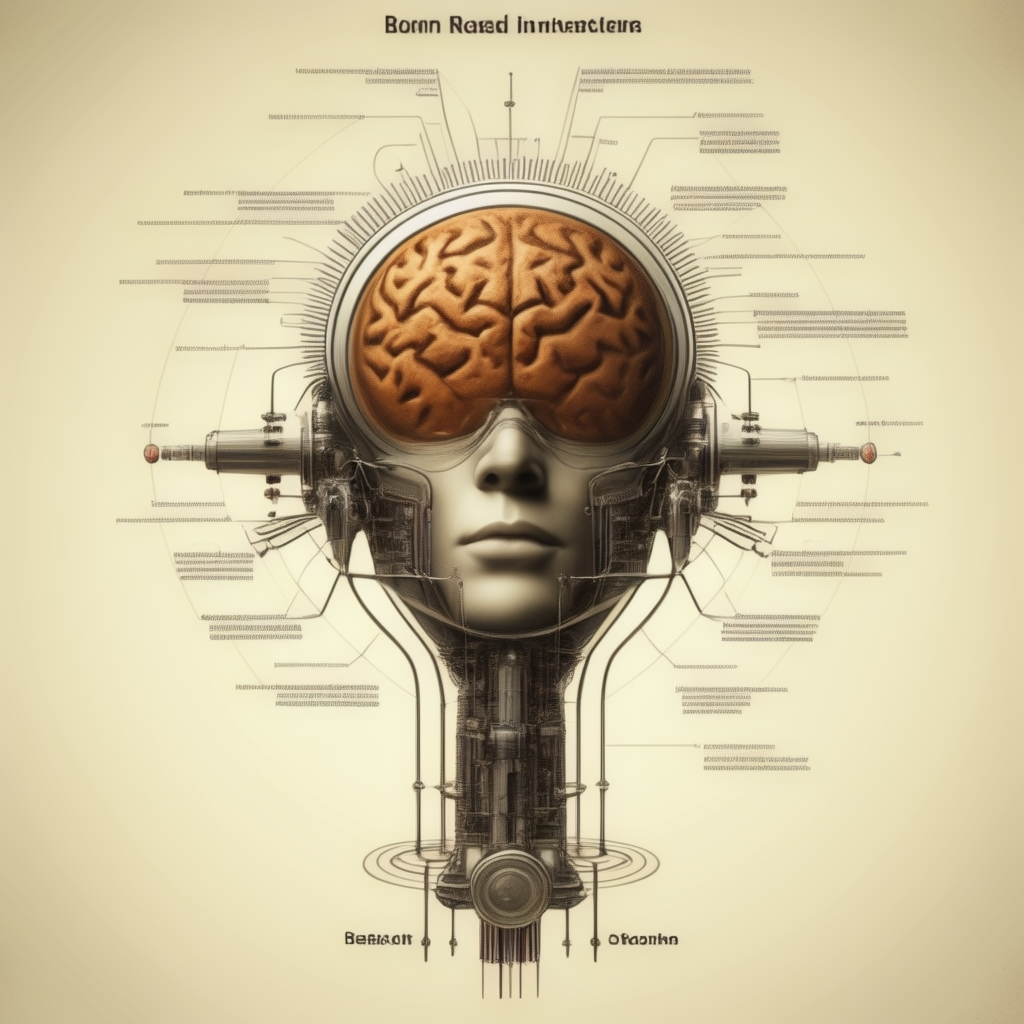1. Psychological Bias
1.1 Optimism Bias:
Exploring Psychological Roots: Optimism bias, deeply rooted in human psychology, traces its origins to evolutionary factors. During human evolution, individuals with a more positive outlook may have been better equipped to cope with challenges, fostering survival and procreation.
Impact on Decision-Making: The influence of optimism bias on decision-making is profound. It shapes how individuals perceive risks and potential outcomes, often leading to overestimation of positive results and underestimation of potential setbacks. This cognitive bias can significantly impact strategic choices in both personal and professional spheres.
1.2 Fear of Reality:
Examination of Hesitation: The hesitation to confront actual results is multifaceted. Individuals may fear failure, disappointment, or judgment from themselves or others. This fear can create a psychological barrier, preventing an honest assessment of one’s progress and inhibiting personal and professional growth.
Emotional Toll and Facing the Truth: Avoiding reality takes an emotional toll. The fear of facing the truth can lead to stress, anxiety, and a distorted self-perception. Confronting reality, while initially challenging, is crucial for personal development, fostering resilience, and building a more accurate understanding of one’s strengths and areas for improvement.
2. The Business of Quantification
2.1 Setting Realistic Goals:
Guidance on Goal Setting: Setting realistic goals involves a strategic approach. It requires a balance between ambition and realism. A step-by-step guide can include:
- Defining Clear Objectives: Clearly articulate what you aim to achieve.
- Assessing Resources: Evaluate the resources required to attain the goals.
- Timely Milestones: Break down goals into achievable milestones with realistic timelines.
Role of Measurable Objectives: Measurable objectives act as tangible milestones. They provide a clear framework for assessing progress, allowing individuals to track advancements and make informed adjustments to their strategies.
2.2 Importance of Metrics:
Emphasizing Quantifiable Metrics: Quantifiable metrics play a vital role in assessing progress. Whether in professional endeavors or personal development, having measurable benchmarks provides objective insights into achievements and areas needing improvement.
Examples of Effective Metrics: Examples of effective metrics vary across domains:
- Career Achievements: Number of successful projects, promotions, or skill acquisitions.
- Personal Development: Health metrics, learning milestones, or achievements in hobbies.
3. Correcting Course
3.1 Feedback Loop:
Conceptual Explanation: The feedback loop is a dynamic process involving continuous assessment and adjustment. It operates on the principle of gathering feedback, analyzing results, and iteratively refining strategies.
Guidance on Regular Feedback: Regular feedback, whether from mentors, peers, or personal reflection, serves as a compass for navigating progress. It provides valuable insights, highlights areas for improvement, and guides informed decision-making.
3.2 Adjusting Expectations:
Recalibrating Based on Feedback: Recalibrating expectations based on real-time feedback is a strategic approach. It involves:
- Regular Assessment: Periodically evaluating progress against set objectives.
- Adaptability: Being open to adjusting expectations in response to changing circumstances.
Flexibility in Goal-Setting: Flexibility in goal-setting is crucial. It allows individuals to adapt their goals to evolving situations, fostering resilience and preventing undue stress from unmet expectations.
4. The Individual Approach
4.1 Self-Awareness:
Role in Goal Assessment: Self-awareness plays a pivotal role in accurate goal assessment. Understanding one’s strengths, weaknesses, and motivations provides a foundation for setting realistic and achievable goals.
Impact on Goal-Setting: The impact of self-awareness extends to the goal-setting process, contributing to the creation of goals aligned with an individual’s values, capabilities, and aspirations.
4.2 Holistic Measurement:
Encouraging Holistic Approach: A holistic approach to quantifying progress considers personal and professional aspects as interconnected components of an individual’s journey. It involves:
- Balancing Priorities: Recognizing the interplay between personal and professional goals.
- Well-rounded Growth: Focusing on overall well-being alongside specific achievements.
Focus on Well-being: Emphasizing overall well-being involves acknowledging that success extends beyond professional accomplishments. It includes mental and physical health, personal relationships, and a sense of fulfillment.
5. Strategies for Improvement
5.1 Time Management:
Balancing Ambition and Realism: Time management techniques for balancing ambition and realism include:
- Prioritization: Identifying and prioritizing tasks based on their impact and alignment with goals.
- Efficient Planning: Creating realistic schedules that accommodate both ambitious pursuits and necessary breaks.
Prioritizing Meaningful Activities: Allocating time to activities aligned with personal and professional priorities ensures that efforts contribute meaningfully to overall progress.
5.2 Continuous Learning:
Significance of Continuous Learning: Continuous learning is a cornerstone of realistic progress. It involves staying informed about industry trends, acquiring new skills, and adapting to evolving circumstances.
Contribution to Realistic Expectations: A commitment to continuous learning contributes to realistic expectations by fostering adaptability and a nuanced understanding of the evolving landscape.
Conclusion: Navigating Realistic Optimism
Summarizing Key Strategies: Recapping the key strategies emphasizes their collective role in achieving realistic optimism. It reinforces the idea that a multifaceted approach is necessary for sustainable and fulfilling progress.
Encouraging a Balanced Mindset: The conclusion encourages readers to adopt a mindset that combines ambition with a clear understanding of reality. It emphasizes that embracing both optimism and a realistic assessment of progress can lead to sustained and fulfilling personal and professional growth.
6. The Role of Accountability:
Individual Accountability: Highlight the importance of individuals holding themselves accountable for their progress. Taking responsibility for actions and outcomes fosters a proactive mindset, contributing to a more accurate assessment of achievements and challenges.
External Accountability: Discuss the benefits of external accountability through mentors, coaches, or peers. External perspectives can offer valuable insights and constructive feedback, further aiding in navigating realistic optimism.
7. Cognitive Restructuring Techniques:
Identifying Cognitive Distortions: Explore common cognitive distortions that contribute to unrealistic expectations, such as all-or-nothing thinking or catastrophizing. Understanding and challenging these distortions can promote a more balanced and realistic mindset.
Cognitive Restructuring Exercises: Provide practical exercises and techniques for cognitive restructuring. These may include keeping a thought journal, rephrasing negative thoughts, or seeking alternative explanations for situations.
8. Resilience Building:
Resilience as a Skill: Frame resilience as a skill that can be developed over time. Resilient individuals are better equipped to navigate setbacks, learn from failures, and maintain a positive outlook even in challenging circumstances.
Learning from Setbacks: Encourage a mindset of learning from setbacks rather than viewing them as failures. Each obstacle presents an opportunity for growth and improvement, contributing to a more nuanced understanding of progress.
9. Data-Driven Decision Making:
Importance of Data: Emphasize the role of data in decision-making. Encourage individuals to collect relevant data to assess progress objectively. This could include tracking key performance indicators, feedback scores, or other measurable metrics.
Analyzing Trends: Guide individuals in analyzing trends within the collected data. Identifying patterns over time allows for a deeper understanding of progress dynamics and informs strategic adjustments.
10. Collaborative Reflection:
Group Reflection Sessions: Promote the idea of collaborative reflection, where individuals come together to share their experiences, challenges, and successes. This collective insight provides diverse perspectives and enriches the overall understanding of progress.
Peer-to-Peer Feedback: Encourage peer-to-peer feedback within collaborative settings. Constructive feedback from peers can offer unique insights and serve as a reality check, ensuring a more holistic view of individual and collective progress.
11. Goal Periodization:
Short-Term vs. Long-Term Goals: Discuss the importance of balancing short-term and long-term goals. Short-term goals provide tangible milestones, while long-term goals offer a broader vision. Striking the right balance prevents the tunnel vision that may accompany unrealistic expectations.
Periodic Goal Review: Recommend periodic reviews of goals to ensure they remain aligned with evolving priorities and circumstances. This iterative process allows for adjustments, reinforcing the adaptability crucial for realistic progress.
12. Psychological Support Systems:
Role of Support Networks: Highlight the significance of psychological support systems, including friends, family, or mentors. These support networks offer emotional assistance during challenging times and contribute to a more resilient and realistic mindset.
Professional Counseling Resources: Acknowledge the value of professional counseling services for individuals facing persistent challenges in maintaining a realistic perspective. Trained counselors can provide guidance in overcoming cognitive barriers and building a healthier mindset.
Conclusion: Sustaining Realistic Progress
Reiterating Key Strategies: Summarize the additional strategies, emphasizing their collective role in sustaining realistic progress. Reinforce the idea that the journey towards realistic optimism is ongoing, requiring continuous effort and adaptation.
Inspiring Continuous Growth: Conclude by inspiring a commitment to continuous growth. Encourage readers to embrace the iterative nature of personal and professional development, celebrating achievements, learning from setbacks, and maintaining a realistic yet optimistic outlook.
13. Mindfulness Practices:
Incorporating Mindfulness: Introduce mindfulness practices as effective tools for staying present and cultivating a non-judgmental awareness of one’s thoughts and emotions. Mindfulness can help individuals avoid getting lost in unrealistic expectations and foster a more grounded perspective.
Mindful Decision-Making: Discuss how integrating mindfulness into decision-making processes can lead to more deliberate and thoughtful choices. Mindful awareness allows individuals to consider the potential consequences of decisions, contributing to realistic expectations.
14. Emotional Intelligence Development:
Understanding Emotions: Emphasize the importance of understanding and managing emotions. Developing emotional intelligence enables individuals to navigate challenges, setbacks, and successes with a greater level of self-awareness and empathy.
Empathy in Goal Setting: Encourage the practice of empathetic goal-setting, considering not only personal aspirations but also the impact of goals on others. This approach fosters a more comprehensive and compassionate perspective.
15. Regular Reflection Rituals:
Establishing Reflective Practices: Advocate for the establishment of regular reflection rituals. Whether through journaling, meditation, or dedicated reflection sessions, these practices provide individuals with consistent opportunities to evaluate their progress.
Celebrating Small Wins: Highlight the significance of celebrating small wins along the journey. Acknowledging and appreciating incremental achievements contributes to a positive mindset and reinforces the commitment to realistic progress.
16. Technological Tools for Tracking:
Use of Productivity Apps: Explore the use of productivity and goal-tracking apps. These tools can help individuals set, monitor, and adjust their goals, providing a visual representation of progress and areas for improvement.
Data Visualization Techniques: Introduce data visualization techniques as powerful aids in understanding complex information. Graphs, charts, and dashboards can transform raw data into visually accessible insights, aiding in realistic assessments.
17. External Validation Awareness:
Balancing Internal and External Validation: Discuss the delicate balance between seeking internal validation (personal satisfaction) and external validation (recognition from others). Overreliance on external validation can lead to skewed perceptions, while internal validation fosters a more resilient mindset.
Recognizing Individual Worth: Encourage individuals to recognize their intrinsic worth independent of external validations. This self-affirmation contributes to a more stable sense of self-esteem and reduces the impact of external factors on one’s perception of progress.
18. Learning from Diverse Experiences:
Diversifying Experiences: Advocate for diversifying experiences to gain a broader perspective on success and progress. Engaging in a variety of activities exposes individuals to different measures of achievement, reducing the likelihood of fixating on a singular definition of success.
Cross-Industry Insights: Explore the potential insights that can be gained from cross-industry experiences. Drawing parallels between diverse fields provides a rich source of inspiration and allows for the application of unconventional ideas to personal and professional goals.
19. Resolving Cognitive Dissonance:
Identifying Misalignments: Educate individuals on the concept of cognitive dissonance—when beliefs or expectations clash with reality. Encourage active identification of misalignments and the willingness to adjust expectations to align with actual outcomes.
Constructive Discomfort: Highlight the constructive aspects of discomfort arising from cognitive dissonance. Instead of viewing it as a negative experience, frame it as an opportunity for growth, prompting individuals to reassess and refine their perspectives.
20. Integrating Reflection into Decision-Making:
Pause and Reflect: Encourage the practice of pausing and reflecting before making significant decisions. This moment of introspection allows individuals to consider their motivations, potential biases, and whether their expectations align with reality.
Decision Impact Assessment: Suggest assessing the potential impact of decisions on overall progress. Considering the broader implications helps individuals make choices that align with their long-term goals and maintain a realistic trajectory.
21. Fostering a Growth Mindset:
Cultivating a Growth Mindset: Promote the cultivation of a growth mindset—the belief that abilities and intelligence can be developed over time. A growth mindset fosters resilience, a love for learning, and a willingness to adapt, essential elements in maintaining realistic progress.
Embracing Challenges: Encourage individuals to embrace challenges as opportunities for learning and improvement. Viewing challenges through the lens of growth facilitates a positive and realistic approach to overcoming obstacles.
22. Cultural and Societal Influences:
Analyzing Cultural Expectations: Acknowledge the impact of cultural and societal expectations on individual perceptions of progress. Understanding these influences helps individuals distinguish between externally imposed benchmarks and personally meaningful goals.
Shifting Cultural Narratives: Discuss the role individuals can play in shifting cultural narratives around success. By challenging societal norms and promoting diverse definitions of achievement, individuals contribute to a more inclusive and realistic societal mindset.
individuals stay aligned with their evolving aspirations and the changing landscape of their personal and professional lives.
Flexible Adaptation: Emphasize the need for flexible adaptation during the reevaluation process. Individuals should be open to adjusting their goals and strategies based on new insights, changing priorities, or unexpected opportunities.
Learning from Setbacks: Encourage a mindset that views setbacks not as failures but as opportunities for learning and refinement. Each setback provides valuable information that can inform future decisions and contribute to a more realistic understanding of progress.
Regular Milestone Checks: Advocate for regular checks on milestones within the overarching goals. Breaking down larger objectives into smaller, manageable milestones allows for more frequent assessments, making it easier to track progress and make timely adjustments.
Integration of Feedback Loops: Integrate feedback loops into the continuous reevaluation process. Actively seek feedback from mentors, peers, or trusted individuals who can provide valuable perspectives on progress, offering insights that may not be immediately apparent.
Alignment with Core Values: Stress the importance of ensuring that recalibrations and adjustments align with core values and long-term objectives. This alignment ensures that changes in direction contribute positively to overall personal and professional fulfillment.
Holistic Life Integration: Extend the concept of reevaluation to encompass various life domains. Encourage individuals to assess not only career goals but also personal well-being, relationships, and other aspects of life. A holistic approach ensures that progress is evaluated comprehensively.
Reflection Rituals: Promote the practice of regular reflection rituals as a structured means of continuous reevaluation. Whether through daily journaling or periodic retreats for introspection, these rituals create intentional spaces for self-assessment and course correction.
Proactive Risk Assessment: Incorporate proactive risk assessment into the reevaluation process. Anticipating potential challenges and risks allows individuals to develop contingency plans, minimizing the impact of unforeseen obstacles on their overall progress.
Leveraging New Opportunities: Highlight the role of continuous reevaluation in identifying and leveraging new opportunities. As individuals evolve, new possibilities may align more closely with their aspirations, presenting avenues for growth that were not initially apparent.
Balancing Long-Term Vision and Short-Term Adjustments: Guide individuals in balancing their long-term vision with short-term adjustments. While the ultimate destination may remain consistent, the path to reaching that destination may require periodic shifts and adaptations based on current circumstances.
Recognizing Seasonal Changes: Encourage individuals to recognize that progress, like seasons, undergoes natural changes. There may be periods of rapid growth, stability, or even hibernation. Understanding the cyclical nature of progress allows for a more patient and realistic approach.
Incorporating External Expertise: Suggest the incorporation of external expertise during the reevaluation process. Seeking guidance from mentors, coaches, or industry experts brings valuable external perspectives that contribute to informed decision-making.
24. Personalized Key Performance Indicators (KPIs):
Identification of Individual KPIs: Personalized Key Performance Indicators (KPIs) involve identifying specific metrics tailored to an individual’s objectives. This customization ensures that the chosen indicators directly align with the unique nature of the goals.
Dynamic KPI Adjustments: The flexibility to adjust KPIs dynamically is crucial. Changing circumstances or evolving priorities may necessitate a shift in focus, and this adaptability ensures that KPIs remain relevant.
Balancing Quantitative and Qualitative Metrics: The balance between quantitative and qualitative metrics acknowledges that both aspects contribute to a comprehensive evaluation. While quantitative metrics provide measurable data, qualitative considerations encompass personal satisfaction and fulfillment.
25. Social Accountability Networks:
Incorporating Social Support: Social accountability networks leverage the power of community. Sharing goals within a supportive network provides external encouragement, fosters accountability, and brings diverse perspectives into the evaluation process.
Collaborative Goal Setting: Encouraging collaborative goal-setting within these networks enhances the collective experience. The exchange of ideas not only enriches individual perspectives but also creates a sense of shared journey and mutual support.
Feedback Loops in Networks: The concept of feedback loops within social accountability networks establishes an ongoing exchange of insights. Regular feedback loops contribute to mutual growth, creating a symbiotic relationship where individuals support and guide each other.
26. Periodic Skill Audits:
Assessment of Skill Development: Periodic skill audits involve assessing the development of relevant skills. This process ensures that acquired skills contribute directly to the individual’s progress, aligning with the evolving requirements of their objectives.
Alignment with Goals: Highlighting the alignment of skill development with overarching goals emphasizes the strategic nature of skill audits. The acquired skills should not only be relevant but actively contribute to achieving the desired outcomes.
27. Environmental Scan for Opportunities:
Conducting Environmental Scans: Regular environmental scans involve actively seeking and evaluating new opportunities. This proactive approach ensures that individuals are aware of potential paths that align with their aspirations.
Market Trends and Industry Insights: Staying informed about market trends and industry insights is integral to the continuous reevaluation process. Incorporating this knowledge allows for adaptability, aligning strategies with the evolving landscape.
28. Metrics for Work-Life Integration:
Work-Life Integration Assessment: Metrics for work-life integration assess the balance between professional and personal aspects. This evaluation ensures a holistic approach to progress, recognizing that success extends beyond career achievements.
Quality of Life Metrics: Including quality of life metrics enhances the evaluation by considering aspects beyond work-related achievements. Factors such as well-being, relationships, and leisure contribute to a comprehensive understanding of progress.
29. Experimentation Mindset:
Cultivation of Experimentation: Promoting an experimentation mindset encourages individuals to view their journey as an ongoing experiment. This approach allows room for trial and error, innovation, and adaptive learning.
Learning from Iterations: Highlighting the value of learning from iterations emphasizes that each experiment contributes to a deeper understanding. Iterations provide insights that inform decision-making and refine strategies for future endeavors.
30. Fostering Intrinsic Motivation:
Intrinsic Motivation as a Driving Force: Emphasizing the role of intrinsic motivation underscores its power as a driving force. Individuals motivated by internal desires and passions are more likely to sustain long-term progress and find fulfillment in their pursuits.
Cultivating Passion-Driven Goals: Encouraging the cultivation of passion-driven goals aligns aspirations with personal passions. This alignment enhances motivation, resilience, and the overall sense of purpose in the journey.
These detailed explanations provide a comprehensive understanding of the nuances within each point, illustrating how they contribute to the continuous reevaluation framework.
Mindful Decision-Making: Integrate mindful decision-making into the continuous reevaluation process. Being present and fully engaged in the decision-making moment enhances the quality of choices, ensuring that adjustments are made with clarity and intention.
Empowering Through Reevaluation: Position the process of continuous reevaluation as an empowering tool. Instead of viewing it as a chore, individuals should recognize it as a self-empowering practice that puts them in control of their journey, fostering a sense of autonomy and purpose.
Emphasizing Evolution Over Perfection: Shift the focus from a quest for perfection to an appreciation of evolution. Continuous reevaluation acknowledges that progress is a dynamic and ongoing process, emphasizing the value of learning, adapting, and growing over time.
Cultivating a Forward-Looking Mindset: Encourage a forward-looking mindset during the reevaluation process. While past achievements and setbacks offer insights, the primary focus should be on how current actions contribute to future aspirations, fostering a sense of purpose and direction.
Evaluating Resource Allocation: Prompt individuals to assess how resources, including time, energy, and skills, are allocated in alignment with their goals. This evaluation ensures that resources are optimally utilized to support realistic and meaningful progress.
Collaborative Reevaluation: Promote collaborative reevaluation in professional and personal settings. Engaging in discussions with mentors, peers, or support networks fosters collective insights and creates a collaborative environment for refining individual goals and strategies.
Periodic Skill Assessments: Encourage periodic assessments of skill development. This includes evaluating existing skills, acquiring new ones, and identifying areas where additional expertise may be beneficial. Skill assessments contribute to a more nuanced understanding of personal capabilities and potential areas for growth.
Strategic Networking Reevaluation: Incorporate strategic networking reevaluation into the process. Assess the composition of professional networks, ensuring that connections align with current objectives. Building and maintaining a network that complements evolving goals enhances opportunities for collaboration and support.
Alignment with External Trends: Advise individuals to align their goals with external trends and changes in their respective fields. Awareness of industry shifts allows for proactive adjustments, ensuring that progress remains relevant within the broader context.
Investing in Continuous Learning: Reinforce the importance of investing in continuous learning as part of the reevaluation process. Staying informed about industry advancements, new technologies, and emerging trends positions individuals to adapt their strategies in a rapidly changing landscape.
Periodic Lifestyle Reevaluation: Extend the reevaluation process to include lifestyle considerations. Assess how personal and professional choices align with overall well-being and happiness. Periodic lifestyle reevaluation
individuals remain adaptable to changing circumstances, emerging trends, and evolving priorities. Regularly revisiting goals allows for necessary adjustments and realignment with current aspirations.
Feedback Integration: Promote the active integration of feedback into the continuous reevaluation process. Feedback, whether from personal reflection or external sources, serves as a valuable compass for navigating the journey of progress. By incorporating constructive feedback, individuals refine their strategies and enhance the effectiveness of their efforts.
Periodic Checkpoints: Emphasize the establishment of periodic checkpoints within long-term plans. Breaking down overarching goals into smaller milestones with specific checkpoints enables individuals to track incremental progress. These periodic assessments offer insights into what is working well and where adjustments are needed.
Reflection Rituals: Encourage the incorporation of regular reflection rituals into daily or weekly routines. These moments of introspection provide individuals with the opportunity to assess their mindset, motivations, and overall well-being. Reflection rituals contribute to a heightened self-awareness that informs realistic expectations.
Goal Relevance Evaluation: Advocate for a critical evaluation of goal relevance over time. As circumstances and priorities evolve, some goals may lose their relevance, while new aspirations may emerge. This ongoing assessment ensures that individuals invest their energy in pursuits aligned with their current values and aspirations.
Adaptability as a Skill: Position adaptability as a skill to be cultivated continually. In a dynamic world, the ability to adapt to unforeseen challenges and changing environments is invaluable. Emphasize the proactive development of this skill, fostering resilience in the face of uncertainties.
Benchmark Adjustments: Discuss the importance of adjusting benchmarks based on changing circumstances. What may have been a meaningful benchmark initially might need recalibration as individuals gain new insights, face unexpected hurdles, or reassess their long-term vision. The flexibility to adjust benchmarks ensures that goals remain realistic and achievable.
Evolution of Aspirations: Acknowledge that aspirations naturally evolve over time. Encourage individuals to embrace the fluidity of their aspirations, understanding that what once defined success may transform. By acknowledging this evolution, individuals can navigate their journey with authenticity and purpose.
Environmental Scanning: Introduce the concept of environmental scanning as part of continuous reevaluation. Regularly scanning the external environment for emerging trends, opportunities, and challenges equips individuals with the insights needed to adjust their strategies in alignment with the broader context.
Leveraging Milestone Celebrations: Highlight the importance of celebrating milestones reached during the journey. Milestone celebrations provide moments of reflection and acknowledgment, reinforcing a positive mindset. They serve as motivational markers and contribute to an overall sense of accomplishment.
Interdisciplinary Learning: Encourage interdisciplinary learning as a means of expanding perspectives. Actively seeking knowledge beyond one’s immediate field fosters a holistic understanding of progress. Drawing insights from diverse disciplines enriches problem-solving abilities and enhances adaptability.
Personal Values Alignment: Stress the significance of aligning goals with personal values during each reevaluation. Reassessing whether goals align with core values ensures that individuals pursue endeavors that are not only successful but also personally fulfilling.
Collaborative Reevaluation: Promote collaborative reevaluation by seeking input from mentors, peers, or trusted advisors. External perspectives provide valuable insights and act as a checks-and-balances mechanism. Collaborative reevaluation enhances the quality of decision-making and progress assessment.
Integration of New Learnings: Highlight the integration of new learnings and experiences into ongoing efforts. Each encounter provides an opportunity to gain insights and refine strategies. Actively incorporating these learnings ensures a continual process of improvement and adaptation.
Narrative Reframing: Introduce the concept of narrative reframing during reevaluation. The way individuals frame their progress narrative influences their mindset. Encouraging individuals to reframe challenges as opportunities and setbacks as learning experiences fosters a positive and realistic outlook.
Intentional Pauses: Advocate for intentional pauses in the pursuit of progress. These pauses allow individuals to step back, assess their journey, and recalibrate their course. Intentional pauses contribute to a mindful approach, preventing burnout and supporting sustained, realistic progress.
Stakeholder Feedback Channels: For individuals in professional settings, stress the importance of establishing feedback channels with stakeholders. Actively seeking feedback from colleagues, supervisors, or clients provides valuable insights into how one’s contributions are perceived. This external input informs adjustments and improvements.
Reevaluation Rituals: Propose the establishment of personalized reevaluation rituals. Whether through annual planning sessions, monthly reflections, or weekly goal reviews, these rituals create structured opportunities for individuals to reassess and realign their trajectory.
Informed Risk-Taking: Encourage informed risk-taking as part of the reevaluation process. While maintaining realistic expectations, individuals should feel empowered to take calculated risks that align with their aspirations. The willingness to step outside comfort zones can lead to breakthroughs and accelerated progress.
Long-Term Vision Alignment: Highlight the importance of aligning continuous reevaluation with the long-term vision. Reassessment should not only focus on short-term goals but also ensure that each step contributes to the overarching vision. This alignment provides a sense of purpose and direction during the reevaluation process.
Adopting Agile Principles: Draw parallels with agile principles from project management as a metaphor for personal and professional progress. Agile methodologies emphasize adaptability, collaboration, and iterative improvement. Applying these principles to personal journeys supports a dynamic and effective approach to reevaluation.







